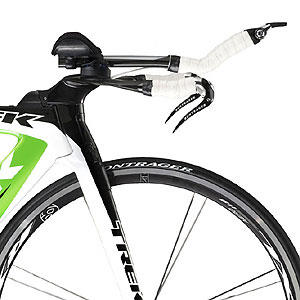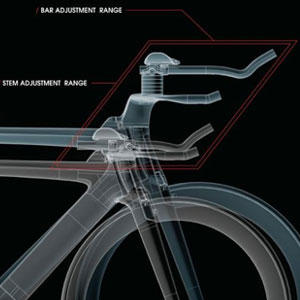
On Oct 23, 2007, Trek released their first white paper to the public after some debate concerning their Equinox TTX and its performance in the wind tunnel were called into question. At the time, our publisher, Dan Empfield, wrote that, "Trek Bicycle Corporation has granted Slowtwitch.com's readers transparency atypical in the bike industry. Trek's Damon Rinard has penned a white paper describing the protocol and results of a recent wind tunnel test that, among other things, compares its bikes to two others in its competitive set." In the past two plus years, the level of transparency regarding wind tunnel testing has changed dramatically. Consumers - at least our readers - now expect to know how the bike they are considering buying stacks up - with hard numbers - against the competition. Employees from Blue, Cervelo, Felt, Kestrel, LOOK, Specialized, Trek (listed alphabetically) and others all participate on the Slowtwitch.com forum. And the expectation is now that these individuals will make themselves available to answer questions about their products. At the risk of throwing him to the dogs, I will say that forum user "Carl" is the Carl Matson of Trek Bicycles whose name appears on this white paper. It was he who arranged for Slowtwitch to host this white paper. While neither he nor we can guarantee he will answer every question posed on our user forum, he has said that he'll do his best to avoid having any "chirping crickets" in threads about the SpeedConcept and this white paper.
The white paper can be downloaded by clicking here. By hosting this paper, Slowtwitch is merely serving as a disseminator of information. We are not attesting to the veracity of the data contained within the white paper or the quality of the testing methodology. We believe that this sort of technical information is an asset to the customer, but it's also important to know that no company's data should be taken as gospel truth. This is Trek's data. It is not independent data. This is not to suggest that Trek is or was guilty of any sort of foul play, but it is important that readers are aware of not only the value of the information contained within, but also the limitations.
One objection that I have to virtually all wind tunnel data that is presented is that it lacks any discussion of the margin of error. Even the most rigorous testing is subject to the accuracy of the equipment used, and even the best equipment has some error. This paper is no different, and while I understand that they are sticking to "industry practices," I nevertheless feel that data ought to be present according to best engineering practices, which would mean the inclusion of discussion of possible errors, limitations of the testing protocol, etc. As thorough and detailed as this paper is in it's discussion of how they endeavoured to prevent and minimize error in testing, any college engineering professor would fail the student that handed it in for a class because of the absence of any discussion of what was wrong with the data despite those efforts. It is my hope that this will at least be the topic for discussion that Trek will entertain, even if they did not include it in the published white paper.

A significant portion of the white paper is dedicated to discussion of the truncated KVF - or Kamm Virtual Foil - airfoils used in the SpeedConcept. But only passing mention is made of the Kamm designs long history in the auto industry and no mention is made of the pioneering aerodynamicist Wunibald Kamm, for whom the design is named. It was Kamm who, in the 1930s, discovered that many - and some would say most - of the aerodynamic properties of an airfoil shape are preserved even if the long trailing edge is cut off. While Kammback or Kamm-tail airfoils are new in the bike industry, they are definitely not a new concept within the auto-industry; Trek makes note of several automobiles that utilize a Kamm-style shape, the Toyota Prius's distinct body shape is probably the most ubiquitous example of a Kamm-tail airfoil in modern times. For those interested in learning more about Kamm and the history of the Kammback design, there are numerous resources available with a simple googling.
While I am - admittedly - critical of certain aspects of this white paper, I nevertheless laud Trek for putting it together and making it available to us. It most definitely answers a great many questions. And while it also raises a lot of new questions, it does so by the open and thoughtful sharing of information. Anyone who reads this paper - whether they are in the market for a SpeedConcept or not - will come away with a greater understanding not only of Trek's products, but also of some fundamental of bicycle aerodynamics. Every rider, regardless of where they fall on the speed continuum, will benefit from having an understanding of the concepts presented in this paper. To steal (and slightly paraphrase) the slogan of the discount clothing store Syms, "an educated consumer is [the] best customer."
Related image gallery: The Trek Speed Concept unveiling


